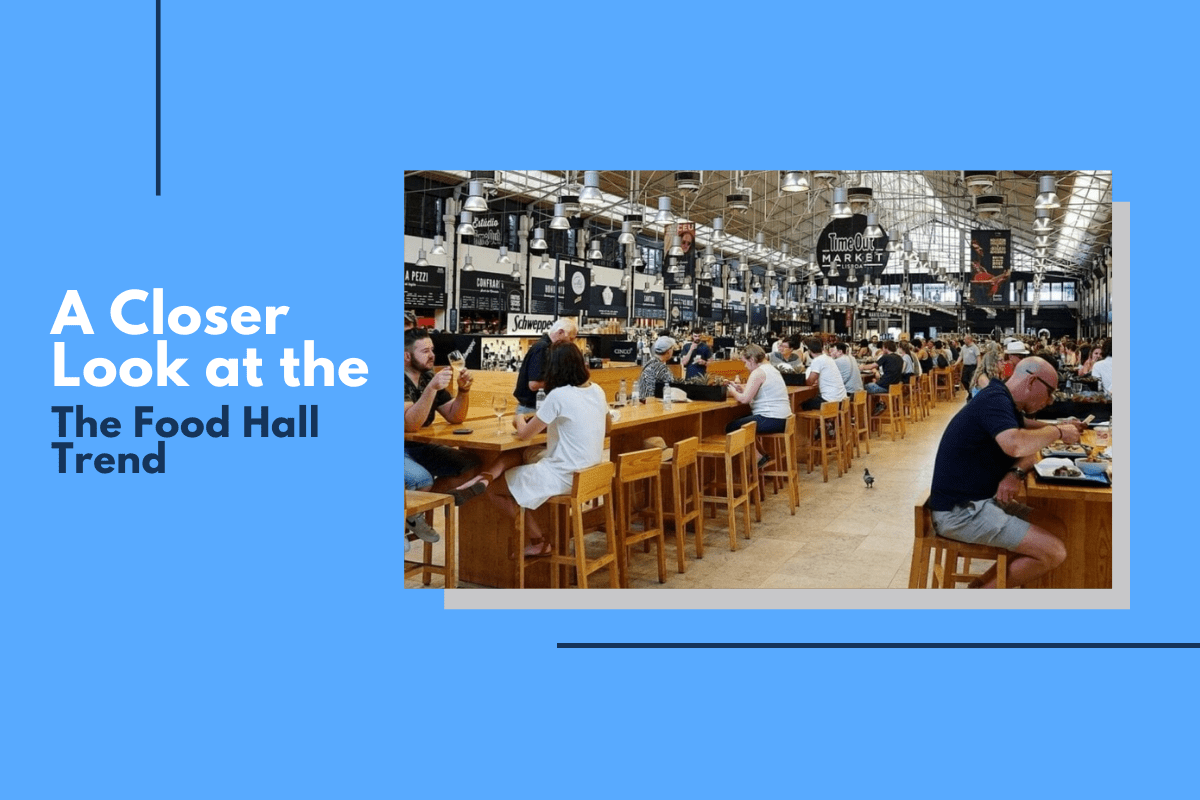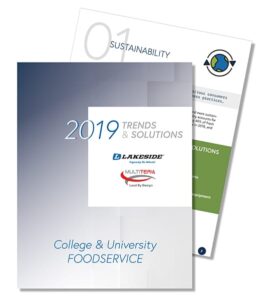
What are food halls, and why are they important? For starters, let’s talk about what they are.
Food halls are kind of like a hybrid between a market and a food court. Designed with both shopping and dining in mind, they’re generally more specialty-oriented than a typical supermarket and they offer more fast-casual options as opposed to full-service restaurants.
You’ve likely seen a food hall in your travels, even if you didn’t know it was a food hall. Popularized by modern food hall pioneers like the Chelsea Market and Eataly in New York City, the trend quickly spread from coast to coast.
Technically, though, it began decades ago in places like Harrods of London, the Granville Island Public Market in Vancouver, and the famous Pike Place Market in Seattle. For Bostonians, they can lay claim to the Quincy Market, which has hosted food merchants since 1742.
Today, though, the combination of food and retail are experiencing a rebirth. Not only are malls re-inventing themselves, but according to a report from Jones Lang LaSalle, 40 percent of all consumers will visit a mall-type location based solely on the restaurants located there. Cue the food hall, and call the real estate developers.
“Food halls are not a fad,” says a 2018 report by developers Cushman & Wakefield. “Food halls are the sharing economy for restaurants.”
In their report, they predicted nearly 200 food halls in operation by the beginning of this year. In real estate-driven places like Boulder, Colorado, for example, restaurants are even turning into food halls. What happens when an enormous, 13,000-square-foot Cheesecake Factory closes in a prime, downtown location? Developers plan to turn it into a food hall.
The bottom line, though, is rooted in philosophy. Yes, people will always need to eat. Yes, people will always need to shop. But what’s brilliant about the food hall concept is that it plays on another human need which is one of interaction and experience.
Food halls, in just a few short years, have become a deeply loved and entrenched part of our collective foodservice landscape. Food, after all, is something that brings us together in our daily search for interaction and experience and operators are more numerous in this recognition.
Food halls are an emerging foodservice trend that colleges and universities can’t ignore.
There are some immediate advantages with a food hall concept. With less overhead and built-in foot traffic associated with food halls, colleges and universities can promote a lower barrier of entry when courting outside foodservice entrepreneurs to partner with. Moreover, students have grown up with “marketplace food halls” and desire this experience on campus too.
Discover 7 other foodservice trends in our free 2019 College and University Foodservice Trends Report.
Lakeside and Multiteria have researched seven other trends that will be important to colleges and universities in the 2019-2020 school year. Download your free copy today to stay on top of the latest ideas and innovations that will help you maintain a first-class foodservice operation!

